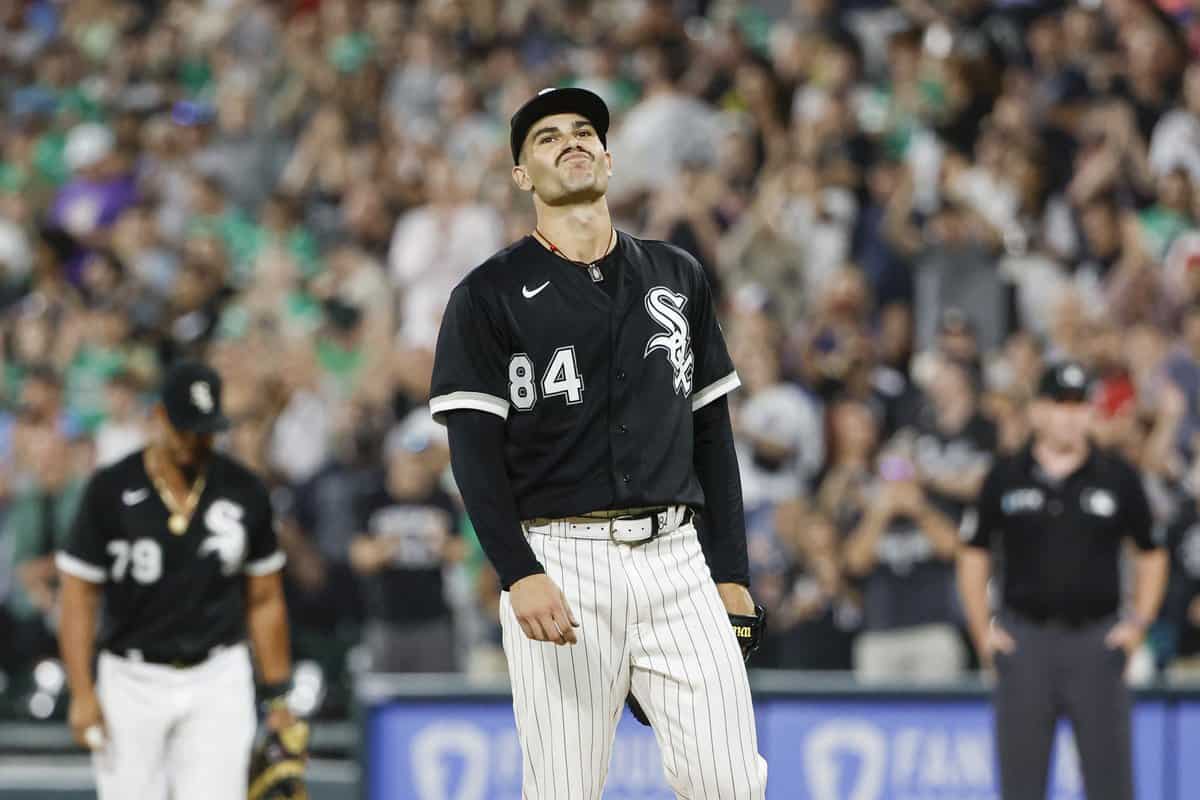Ted Williams could have sat the final day of the 1941 season and secured his status as the last player to hit .400. His average stood at .400 that before a meaningless doubleheader against the Philadelphia Athletics, but even a respectable showing like a 3-for-8 day would have knocked him down to .399.
Even with that razor-thin margin for error, Williams took the field. On one hand, he was compelled by the fact that he only sat at .400 by rounding up. Detractors -- and Williams had plenty of them -- could say he didn't actually hit .400, but .3996. Williams didn't want to give them the ammo.
His average climbed over .400 without the help of rounding after a single in his first at-bat of the first game, so he could've stopped there ... or maybe after a second plate appearance, since a 1-for-2 performance would've allowed him to finish at an even two-fifths.
Instead, Williams played the entirety of both games. He just about eliminated the risk of dropping below .400 by going 4-for-5 in Game 1, but he improved his average even more with a 2-for-3 performance in the final game of the season. He finished the year hitting .406, and for that he was rewarded with ... a runner-up finish in the MVP race to Joe DiMaggio.
Dylan Cease losing his no-hit bid to Luis Arraez when an inferior hitter stood in the on-deck circle made me wonder what we would've thought had Williams finished the season hitting .396 instead of .406. It probably would've been cited as an example as the other ways he'd come up short, like going 5-for-25 in his only World Series, a seven-game loss to the Cardinals in 1946. Instead, putting it all on the line and winning added to his lore as the Greatest Hitter Who Ever Lived.
Cease gambled and lost, albeit with lower stakes. Nobody would've blamed him if he pitched around Arraez, the AL batting leader facing him for a fourth time Saturday night, in favor of facing Kyle Garlick, a righty who usually only starts against lefties. Sure enough, the results validated that particular course. Arraez lined a single to right field, while Garlick struck out on four pitches.
But while no-hitters are a binary judgment -- DID HE ALLOW ZERO HITS, Y/N -- they're not all created equal. The impressiveness of a no-hitter almost has a perfect correlation with whether it followed the straightest possible line. Clayton Kershaw struck out 15 batters in his no-hitter back in 2015, and only a fielding error kept it from being a perfect game. That's levels more thrilling than Edwin Jackson's eight-walk no-hitter in 2010, which stands out for how it actually kinda sucked. Along the same lines, combined no-hitters resonate with me only as trivia, rather than an actual feat.
Had Cease pitched around Arraez and struck out Garlick, it would've been the 21st no-hitter in White Sox history, but it would've lost a little bit of its standing. Statistically, his game score would've lost a couple points for a third walk. Anecdotally, he might get dogged a bit for not competing against the hitter in front of him while the Sox led by 13. You can argue that neither point really matters, because the prestige of having thrown a no-hitter usually outlasts such granular details, and that much is true.
Here's a counterpoint: Imagine how lame it would've been if Cease pitched around Arraez, then gave up a single to Garlick.
Sure, that's an unlikely scenario given the advantages Cease held over Garlick that he didn't have on Arraez, but it's still possible, whether due to the fluctuation in adrenaline, the shift to stretch mechanics, or merely the butterfly effect. Pitching around Arraez presented its own gamble, because while there's nobility in losing a no-hitter to Arraez, there would be none in pitching around him and still having nothing to show for it.
One of the reasons I prefer regular-season baseball to the postseason version is that the individual games don't matter as much, so players are given more of a chance to compete. I can appreciate the weight of managerial decisions in October, but I don't like that they often overshadow the act of a hitter beating a pitcher or vice versa.
Sometimes competing results in failure, but one of my favorite baseball plays registered as such. Back in May 2011, the White Sox were able to hold on to a 4-3 victory over the Oakland A's in the Coliseum because Coco Crisp tried to steal home on Matt Thornton with two outs in the eighth inning, but Thornton got the ball to the plate in time, and A.J. Pierzynski applied the tag.
Watching as a White Sox fan, I celebrated the out. Watching as a baseball fan, it would've been kinda cool to see Crisp pull it off. But why an unsuccessful stolen base attempt stands out is the way everybody talked about the play afterward. Whether it was Crisp, Thornton, Omar Vizquel (who was trying to hold Crisp at third), Ozzie Guillen or Bob Geren, everybody audibly appreciated the confidence and boldness of the play. It was understood that Crisp earned the chance to take that risk.
Cease, who seized the opportunity to make up ground for award consideration with Justin Verlander and Shane McClanahan both on the injured list, should similarly feel like he can beat anybody, especially when it poses no risk to the game outcome. Saturday night's game came down to the AL Cy Young Award winner facing the possible AL batting crown winner with a no-hitter on the line. Pierzynski, now in the broadcast booth, advocated for Cease skirting the match-up. He had a point, but it made for lousy theater. I wanted to see whose best ended up besting. To me, that's the best, even if the outcome makes it feel like the worst.





